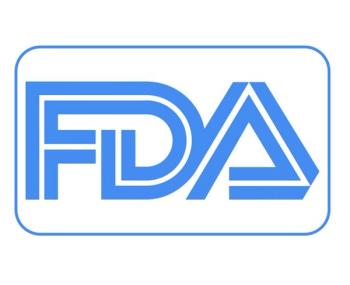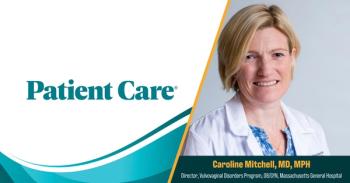
Migraine Risk Rises With Unexpectedness of Daily Experiences, the "Surprisal" Factor
Higher surprisal scores, measuring how atypical a daily experience is, increased migraine odds by 86% at 12 hours and 115% at 24 hours in new cohort study.
A cohort study of 109 adults with migraine found that higher levels of trigger "surprisal," a measure of how atypical a day's experiences are compared to an individual's usual patterns, significantly increased the odds of headache attacks within 12 and 24 hours. For each “bit” increase in surprisal score, the odds of a future headache rose 86% at 12 hours (OR, 1.86; 95% CI, 1.12-3.08; P =.02) and 115% at 24 hours (OR, 2.15; 95% CI, 1.44-3.20; P <.001).1
The findings, published in JAMA Network Open, suggest that migraine risk may be driven not just by specific triggers but by the degree to which daily experiences deviate from typical scenarios. This information-theoretic approach could offer a more personalized and dynamic framework for predicting migraine attacks, Dana P. Turner, MSPH, PhD, clinical researcher and faculty member in the department of anesthsia, critical care, and pain medicine at Massachusetts General Hospital, and colleages wrote.1
Trigger Tracking is a Challenge
The millions of individuals affected by migraine largely use the trial and error method to identify and avoid headache triggers.2 There are hundreds of proposed triggers, however, from dietary and environmental factors to psychological stressors, making it nearly impossible to isolate causes with certainty.3,4 Most people rely on observational assessment, comparing fluctuations in suspected triggers with variations in migraine occurrence.
Turner et al previoulsy demonstrated that rare or unexpected values of common triggers like caffeine consumption, stress, and mood disturbances were associated with increased headache activity.5 Building on this work, the current study used surprisal, defined as the negative logarithm of the probability of an observed exposure, to quantify how unusual each day's experiences were for each individual.
Electronic Diary Tracks Experience Twice Daily
The researchers enrolled participants with migriane diagnoses based on the International Classification of Headache Disorders who experienced 4 to 14 headache days per month. The 109 participants had a median age of 35 years, and 93.5% were women. All participants completed twice-daily electronic diary entries for 28 days, capturing exposure to behavioral, emotional, and environmental triggers including sleep patterns, mood states measured by the Profile of Mood States Short Form, food and drink intake, daily stressors from the Daily Stress Inventory, and weather influences.
Primary outcomes were the occurrence of a headache attack within 12 and 24 hours of trigger exposure (0 = no attack; 1 = attack). A headache attack was defined as any self-reported headache with pain greater than 0 on a 0–10 scale, accompanied by any secondary symptoms (eg, photophobia, phonophobia).
The investigators calculated surprisal scores using within-person empirical probability distributions, reflecting how atypical each day's experiences were compared to that individual's typical patterns. The total surprisal score summed item-level surprisal values and was scaled by the number of items to yield a mean surprisal score per item, expressed in "bits" of information.
Study Findings
The 104 participants with complete diaries recorded 5,176 total entries and experienced headaches on 29.5% of days. Median headache frequency was 8 days per month, with moderate to severe disability.
Higher surprisal scores, which reflected unexpected physiological, emotional, or environmental changes, were significantly associated with increased odds of a headache within both 12 hours (OR 1.86; 95% CI, 1.12-3.08) and 24 hours (OR 2.15; 95% CI, 1.44-3.20). As noted, each 1-bit increase in surprisal raised the odds of a future headache by 86% and 115%, respectively. Sensitivity analyses showed slightly attenuated but still significant effects.
Turner and colleagues observed substantial individual variation: those with higher baseline headache risk showed weaker surprisal–headache associations. At 12 hours, the relationship was nonlinear and influenced by prior surprisal levels. At 24 hours, it was more linear, ie higher current surprisal consistently increased headache risk, though the effect diminished when prior surprisal was already high.
Overall, surprisal emerged as a measurable, dynamic risk factor for imminent migraine attacks, with predictive value modulated by recent contextual patterns and individual baseline risk.
Study Limitations and the Future
Among the study's limitations Turner and team acknowledged the small sample size, a result of COVID-19 disruptions, which precluded subgroup analyses. Their analysis focused on magnitude-based surprisal without accounting for change-based components or covariates like acute medication use. Finally, while 12-hour reporting windows were used to minimize recall problems, retrospective self-report of headache attacks could introduce bias, the noted.
The authors concluded that their findings support the value of a person-centered, information-theoretic approach to understanding migraine triggers that "[moves] beyond static lists of potential causes to account for the unpredictable and context-sensitive nature of daily life." They suggesed that incorporating surprisal into digital headache diaries or wearable technologies could help individuals forecast headache risk in real time. Rather than focusing solely on avoiding specific triggers, interventions might target behavioral regularity or emotional regulation to reduce the experience of surprisal itself.
References
- Turner DP, Patel T, Caplis E, Houle TT. Information-theoretic trigger surprisal and future headache activity. JAMA Netw Open. 2025;8(11):e2542944. doi:10.1001/jamanetworkopen.2025.42944
- Seng EK, Martin PR, Houle TT. Lifestyle factors and migraine. Lancet Neurol. 2022;21(10):911-921. doi:10.1016/S1474-4422(22)00211-3
- Turner DP, Leffert LR, Houle TT. Appraisal of headache trigger patterns using calendars. Headache. 2020;60(2):370-381. doi:10.1111/head.13703
- Lipton RB, Penzien DB, Turner DP, Smitherman TA, Houle TT. Methodological issues in studying rates and predictors of migraine progression and remission. Headache. 2013;53(6):930-934. doi:10.1111/head.12128
- Turner DP, Lebowitz AD, Chtay I, Houle TT. Headache triggers as surprise. Headache. 2019;59(4):495-508. doi:10.1111/head.13507
Newsletter
Enhance your clinical practice with the Patient Care newsletter, offering the latest evidence-based guidelines, diagnostic insights, and treatment strategies for primary care physicians.


























































































































































































































































































